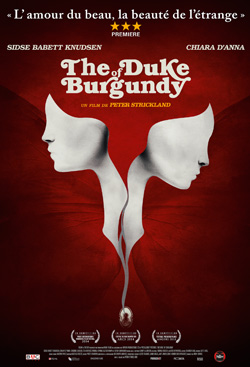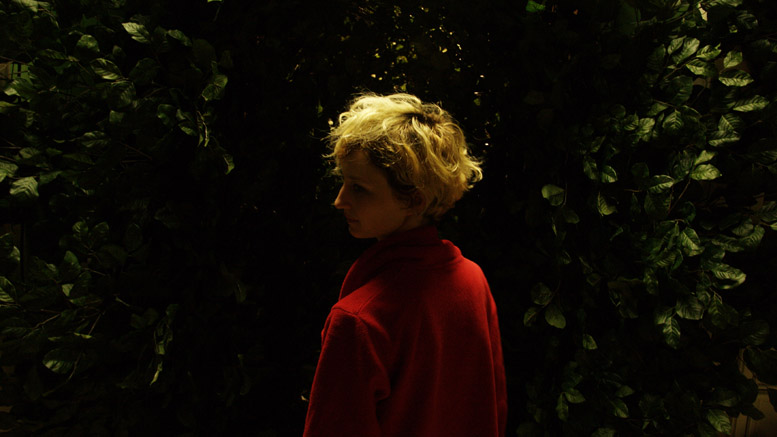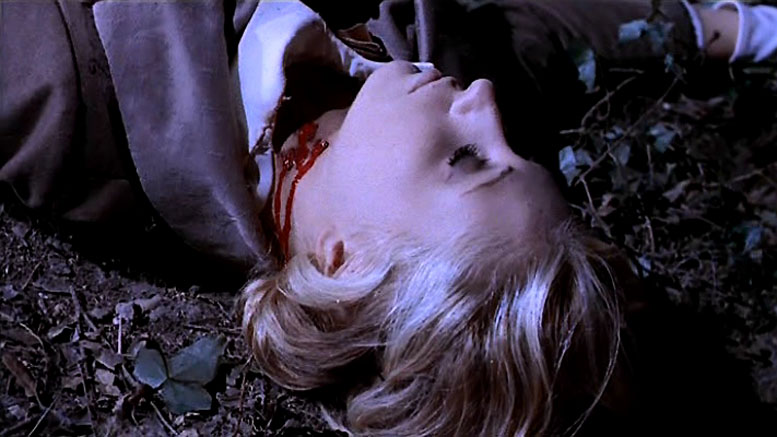Director: Peter Strickland
Writer: Peter Strickland
Stars: Sidse Babett Knudsen, Monica Swinn, Chiara D’Anna
At some point in the mid 1970s, narrative became king in cinema. The lyrical, semi-improvised and let’s be quite honest self-indulgent European art cinema made way for more muscular, focused productions from the likes of Scorsese and Coppola. Independent cinema started looking towards John Carpenter and George Miller for inspiration, while in the meantime those who were still continuing to focus primarily on cinematic texture began to look rather peripheral, rather outdated. Almost all of the key filmmakers of the eighties, nineties and even noughties (your Cronenbergs, Tarantinos, Coen brothers etc etc etc) came from this storytelling tradition, even if they fiddled around with narrative structures and incorporated aspects of art-house cinema into the look of their films.

Peter Strickland is one of a handful of directors who are an exception to this rule. With Katalin Varga and Berberian Sound Studio he has staked his territory: he trades in the slow paced, the immaculately shot, the deliberately obtuse. And frankly he’s a very welcome presence; it’s always nice to have someone doing something a little bit different, whose films work on a different level to the other stuff that’s out there. The Duke of Burgundy continues in very much the same vein as his previous work: set in a weird mid-European country where there are apparently no men and no children it follows the relationship between the older Cynthia (Sidse Babett Knudsen) and her younger lover Evelyn (Chiara D’Anna). They spend some of their time very occasionally attending meetings at some kind of etymological society (where the lectures are attended by a mixture of other amateur scientists and fashion mannequins), far more of it engaging in protracted sexual games with a domination theme.
That’s about it, the story doesn’t really progress, apart from establishing that Cynthia is becoming rather tired of all these shenanigans; she’d frankly rather be slobbing out in her jimjams than cramming herself into uncomfortable S&M gear. There’s the suggestion of an affair; Evelyn develops a predilection for being locked in a trunk during the night; and a carpenter visits to try and sell them a ‘human toilet’. But the reason for watching it is the slow, deliberate and deliberately peculiar atmosphere, which settles in your bones and doesn’t let go: nothing much might happen, but it’s certainly not boring. Of course, this was a fairly standard approach for sixties art-house films and there are very obvious nods to Last Year at Marienbad as well as the less reputable work of Jess Franco (whose regular actress Monica Swinn has a small part) and Walerian Borowczyk. Both the titles and the soundtrack by Cat’s Eye are very openly retro, and it also bought to mind other films such as Bay of Blood (the etymological angle) and the unjustly forgotten Femmine carnivore (in which a remote clinic is entirely populated by women and there is a greenhouse full of praying mantises in grounds). It’s not for everyone, but I loved it. Highly recommended.
9/10

